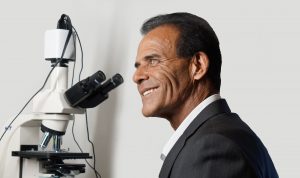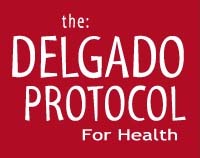Everything You Need to Know About Low Level Laser Therapy for Hair Loss
There are many different treatments available for hair loss, unfortunately many of them are not clinically proven and they simply don’t work. And the ones that do, are costly and tend to produce a myriad of negative side-effects. If you are a hair loss sufferer (and most Americans over the age of 50 are), don’t despair! There is a highly effective therapy called low level laser therapy (LLLT), that both reduces hair loss and enhances hair growth. In order to fully appreciate the unique benefits of LLLT, it is important to first understand the drawbacks of the top 3 conventional hair loss treatments.
Conventional Treatment Drawbacks
Minoxidil (Branded as Rogaine)
Minoxidil, which typically comes as a solution that is massaged into the hair and scalp, is one of the most commonly prescribed, FDA approved treatments for hair restoration. Studies show that minoxidil can increase heart rate and cause itchiness, dandruff, soreness and inflammation of the scalp. It is also only effective in about 38{26cc0ed11e2bb6722aeee461b889fb0a3f7e0a26d72d2ac41cff8364d94a8d9c} of patients because it requires an enzymes (sulfotransferase) in order to work, and many people do not have enough of that enzyme.
Finasteride (Branded as Propecia)
Finasteride is another FDA approved medication for hair loss, and it is taken as a pill. Finasteride can slow hair loss and enhance growth, but its effects are minimal. In fact, one study found that after 5 years of use, there is a mere 2 increase in the average number of hairs per square inch. Propecia can also cause a range of troublesome side-effects including: loss of libido, inability to orgasm, impotence, swelling in hands and feet, dizziness, headaches, runny nose, sneezing, insomnia, chills, and confusion.
Hair Transplants
Hair transplants can produce dramatic, long lasting results; however, they require invasive surgery, which needs to take place in multiple stages (making it very time consuming). The transplanted hair can sometimes appear unnatural, and the surgical procedure can cause infected hair follicles, loss of transplanted hair, and swelling, numbness, and itching of the scalp.
Low Level Laser Therapy (LLLT) – The Safe and Effective Alternative
Low level laser therapy (which is also called red light therapy, low level light therapy, cold laser, soft laser, biostimulation and photobiomodulation), uses infra-red laser beams to treat a variety of health conditions, one of which is hair loss. LLLT is a painless therapy that requires minimal time commitment. It decreases inflammation, increases local blood flow and stimulates hair growth. It is FDA approved, and it has been scientifically proven to be both safe and highly effective for hair restoration, when used correctly.
What Type of Balding Does It Treat?
LLLT treats androgenetic alopecia, which is more commonly referred to as male or female-pattern baldness. Androgenetic alopecia is a genetic condition and it is the most common cause of hair loss in both men and women. It affects 50 of males over the age of 40, and 75 of females over 65. People with androgenetic alopecia have a gene that makes them more sensitive to the effects of the androgenic hormone—Dihydrotestosterone (DHT). DHT can build-up in the inner roots of the hair follicles, and in genetically sensitive individuals the DHT causes the hair follicles to get smaller and smaller. Eventually the follicles become completely dormant and hair growth stops completely.
How LLLT Works
There are three phases of hair growth: the anagen phase, which is the growth stage; the catagen stage, which is the transition stage where hair follicles begin to shrink; and the telogen phase, where hair follicles become dormant and shed. The stimulation from LLLT helps to shift hair follicles into the anagen phase (and therefore restore hair growth), in multiple ways.
Firstly, LLLT uses a light that produces a specific wavelength (typically in the range of 630 to 670 nanometers) which has a unique ability to be absorbed by the molecules of the hair follicles. This type of light penetrates the scalp and stimulates the epidermal stem cells which are responsible for the regeneration of hair follicles. The increased blood flow that LLLT causes helps to increase the delivery of nutrients and oxygen to the hair follicles. Finally, LLLT stimulates metabolic processes necessary for hair growth and helps to prevent the build-up of DHT in the follicles.
What LLLT Can and Can’t Do
LLLT is highly effective at treating the weaker, thinner, wispier hair follicles, making the hair markedly thicker, stronger, and healthier. It’s also great at stopping hair loss in its tracks. LLLT only works if there is an active hair follicle however, and it cannot cause hair growth in hair follicles that are already dead (areas on the scalp where there is no hair at all). Trying to use LLLT in these areas is like trying to fertilize a garden that you forgot to plant – it simple won’t work (and no other medication or therapy will either). It is therefore best to start LLLT as earlier as possible, in order to obtain maximum hair restoration benefits.
Low Level Laser Devices and Treatment Time
LLLT can be done at home or in the salon, and 2-3 treatments per week are typically recommended. Each treatment lasts between 8 and 15 minutes, and significant results are typically seen after 2 to 3 months.
The procedure can be carried out using:
- In-salon hoods or overhead panels
- Hand-held devices
- Bonnets or head caps
Bonus Tip for Maximizing Hair Regrowth
Since high levels of DHT in genetically sensitive individuals is the leading cause of baldness, reducing DHT levels is an effective way of maximizing the hair regrowth benefits of LLLT. In fact, some hair loss sufferers don’t even need LLLT; simply lowering their DHT levels is enough to stop the hair loss. DHT Block is a unique supplement that contains a blend of highly effective herbs and nutrients, that help to safely reduce DHT levels and to balance out other hormones that play a role in healthy hair growth: https://unitynaturals.com/product/dht-block/
*For more information on how to reverse hair loss naturally: (insert link to ‘How to Prevent and Reverse Baldness, Simply, Safely, and Naturally’)
References:
https://www.ncbi.nlm.nih.gov/pmc/articles/PMC3944668/
http://www.dermnetnz.org/topics/low-dose-laser-therapy-for-hair-loss/
https://ghr.nlm.nih.gov/condition/androgenetic-alopecia#statistics
http://www.aapainmanage.org/pain-practitioner/the-practice-of-low-level-laser-therapy/





